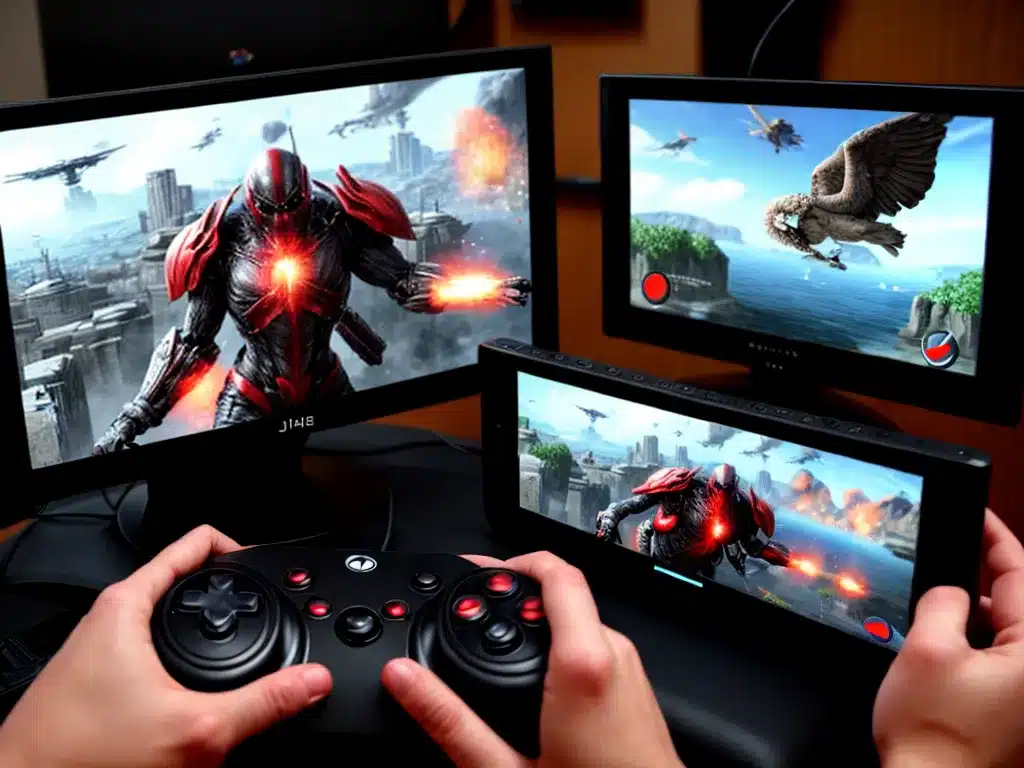
As a hardcore gamer and technology enthusiast, I’m fascinated by the operating systems that power our favorite video game consoles. In this article, I’ll provide an in-depth look at some of the most significant innovations in video game OS technology over the years.
From Cartridges to Discs
In the early days of home video game consoles, games were stored on ROM cartridges that plugged directly into the system. This allowed for incredibly fast load times, but had limited storage capacity.
The shift from cartridges to optical discs like CD-ROM and DVD brought massive increases in potential game size and complexity. For example, the PlayStation console pioneered CD-based games in 1994, allowing for full motion video, detailed 3D graphics, and orchestral soundtracks.
However, reading data from optical discs brought new challenges for optimizing load times. Innovations like data streaming and cache memory helped maximize performance. Modern consoles even install portion of the game data directly to the hard drive to improve access speeds.
Multi-Core CPUs
The CPUs (central processing units) in early consoles like the Super Nintendo were relatively simple, single-core chips optimized for 2D sprite graphics.
As games became more complex, consoles adopted more robust multi-core CPUs like the Cell processor in the PlayStation 3. With multiple cores, different game tasks can be parallelized across cores for better efficiency.
Modern consoles like the PlayStation 4 use x86-64 CPUs with 8 high-performance AMD cores. Advanced features like SIMD (single instruction, multiple data) further boost computational power for visual effects, AI, and physics.
Custom Graphics APIs
Game consoles have unique, proprietary graphics APIs (application programming interfaces) tailored specifically for gaming workloads.
For example, the PlayStation 3 had a custom API called GCM (Graphics Core Next) built specifically to leverage the parallelism of the Cell processor.
The Xbox One uses DirectX 12, which has new features like asynchronous compute to queue graphics and compute tasks simultaneously across GPU cores.
These custom APIs are designed hand-in-hand with the console hardware to maximize graphical fidelity and performance.
Virtualization and Backward Compatibility
Recent consoles use virtualization to enable backward compatibility with previous console generations.
The Xbox One uses a hypervisor to virtualize the Xbox 360 at the hardware level, enabling 360 games to run natively.
The PlayStation 5 utilizes improved virtualization capabilities in AMD Zen 2 CPUs to emulate the PS4 architecture. This allows PS4 games to run with greater stability and improved load times on PS5 hardware.
Virtualization provides an elegant solution for maintaining backward compatibility, while allowing new consoles to architect entirely new OS and hardware designs.
Operating Systems
Of course, the operating system itself has evolved dramatically across console generations.
The PlayStation 3 introduced a radically new OS called XrossMediaBar focused on multimedia capabilities. The PS4 pivoted to a more standard FreeBSD 9 base for robust networking support.
The Xbox One OS combines the Windows kernel for compatibility with a layered hypervisor for security and virtualization.
Overall, video game OSes have adapted cutting-edge tech like virtualization, advanced APIs, and powerful system-on-chip designs to meet the growing demands of modern gaming experiences. With the power of new consoles like PS5 and Xbox Series X, the future looks incredibly bright for gaming technology.












